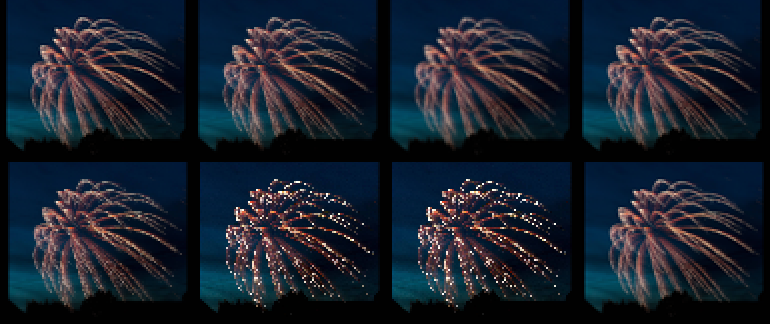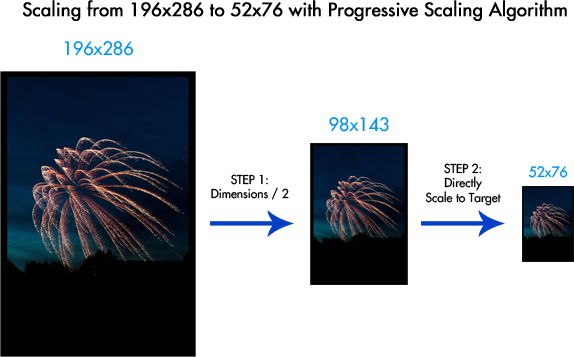I have 10,000 photos that need to be resized so I have a Java program to do that. Unfortunately, the quality of the image is poorly lost and I don't have access to the uncompressed images.
import java.awt.Graphics;
import java.awt.AlphaComposite;
import java.awt.Graphics2D;
import java.awt.Image;
import java.awt.RenderingHints;
import java.awt.image.BufferedImage;
import java.io.File;
import java.io.IOException;
import javax.imageio.ImageIO;
/**
* This class will resize all the images in a given folder
* @author
*
*/
public class JavaImageResizer {
public static void main(String[] args) throws IOException {
File folder = new File("/Users/me/Desktop/images/");
File[] listOfFiles = folder.listFiles();
System.out.println("Total No of Files:"+listOfFiles.length);
BufferedImage img = null;
BufferedImage tempPNG = null;
BufferedImage tempJPG = null;
File newFilePNG = null;
File newFileJPG = null;
for (int i = 0; i < listOfFiles.length; i++) {
if (listOfFiles[i].isFile()) {
System.out.println("File " + listOfFiles[i].getName());
img = ImageIO.read(new File("/Users/me/Desktop/images/"+listOfFiles[i].getName()));
tempJPG = resizeImage(img, img.getWidth(), img.getHeight());
newFileJPG = new File("/Users/me/Desktop/images/"+listOfFiles[i].getName()+"_New");
ImageIO.write(tempJPG, "jpg", newFileJPG);
}
}
System.out.println("DONE");
}
/**
* This function resize the image file and returns the BufferedImage object that can be saved to file system.
*/
public static BufferedImage resizeImage(final Image image, int width, int height) {
int targetw = 0;
int targeth = 75;
if (width > height)targetw = 112;
else targetw = 50;
do {
if (width > targetw) {
width /= 2;
if (width < targetw) width = targetw;
}
if (height > targeth) {
height /= 2;
if (height < targeth) height = targeth;
}
} while (width != targetw || height != targeth);
final BufferedImage bufferedImage = new BufferedImage(width, height, BufferedImage.TYPE_INT_RGB);
final Graphics2D graphics2D = bufferedImage.createGraphics();
graphics2D.setComposite(AlphaComposite.Src);
graphics2D.setRenderingHint(RenderingHints.KEY_INTERPOLATION,RenderingHints.VALUE_INTERPOLATION_BILINEAR);
graphics2D.setRenderingHint(RenderingHints.KEY_RENDERING,RenderingHints.VALUE_RENDER_QUALITY);
graphics2D.setRenderingHint(RenderingHints.KEY_ANTIALIASING,RenderingHints.VALUE_ANTIALIAS_ON);
graphics2D.drawImage(image, 0, 0, width, height, null);
graphics2D.dispose();
return bufferedImage;
}
An image I am working with is this:

This is the manual resizing I've done in Microsoft Paint:

and this is the output from my program [bilinear]:

UPDATE: No significant difference using BICUBIC
and this is the output from my program [bicubic]:

is there anyway to increase the quality of the program output so I don't have to manually resize all photos?
Thank you in advance!








BICUBICisn't any different from theBILINEAR. That answer and all other ones have been read and looked through. I have found no solution that I've worked through that satisfies so far... This is why I decided to ask my own question. Thank you for the suggested [ready looked through] reading :) – Roaring